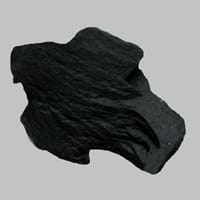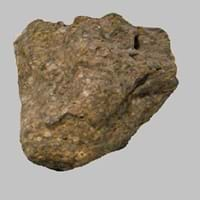Lignite and Tuff
Definition
Definition
Lignite is a soft brownish coal which shows traces of plants and is intermediate between bituminous coal and peat
Tuff is a type of rock made of volcanic ash ejected from a vent during a volcanic eruption
History
Origin
France
Italy
Discoverer
Unknown
Unknown
Etymology
From French, Latin lignum wood + -ite1
From a Latin word tophous then in Italian tufo and finally tuff
Class
Sedimentary Rocks
Igneous Rocks
Sub-Class
Durable Rock, Soft Rock
Durable Rock, Medium Hardness Rock
Family
Group
Not Applicable
Volcanic
Other Categories
Coarse Grained Rock, Fine Grained Rock, Medium Grained Rock, Opaque Rock
Fine Grained Rock, Opaque Rock
Texture
Texture
Amorphous, Glassy
Clastic, Pyroclastic
Color
Black, Brown, Dark Brown, Grey, Light to Dark Grey
Brown, Grey, Yellow
Maintenance
Less
More
Durability
Durable
Durable
Water Resistant
No
Yes
Scratch Resistant
No
Yes
Stain Resistant
No
No
Wind Resistant
No
No
Acid Resistant
No
No
Appearance
Veined or Pebbled
Dull, Vesicular and Foilated
Uses
Architecture
Interior Uses
Not Yet Used
Decorative Aggregates, Entryways, Flooring, Homes, Interior Decoration
Exterior Uses
Not Yet Used
As Building Stone, As Facing Stone, Garden Decoration, Office Buildings, Paving Stone
Other Architectural Uses
Not Yet Used
Curbing
Industry
Construction Industry
for Road Aggregate, Steel Production
Building houses or walls, Construction Aggregate
Medical Industry
Not Yet Used
Not Yet Used
Antiquity Uses
Not Yet Used
Artifacts, Monuments, Sculpture, Small Figurines
Other Uses
Commercial Uses
Electricity Generation
Creating Artwork
Types
Types
Xyloid Lignite or Fossil Wood and Compact Lignite or Perfect Lignite
Welded tuff, Rhyolitic tuff, Basaltic tuff, Trachyte tuff, Andesitic tuff and Ignimbrite.
Features
Generally rough to touch, Helps in production of Heat and Electricity, Used as fossil fuel
Always found as volcanic pipes over deep continental crust
Archaeological Significance
Monuments
Not Yet Used
Used
Famous Monuments
Not Applicable
Easter Island in the Polynesian Triangle, Pacific Ocean
Sculpture
Not Yet Used
Used
Famous Sculptures
Not Applicable
Data Not Available
Pictographs
Used
Used
Petroglyphs
Used
Used
Figurines
Not Yet Used
Used
Fossils
Present
Absent
Formation
Formation
Coal formation takes place due to accumulation of plant debris in a swamp environment. The Coal formation process continues, as peat turns into lignite brown or black coal at increasing heat and pressure.
Tuff is formed when large masses of ash and sand which are mixed with hot gases are ejected by a volcano and avalanche rapidly down its slopes.
Composition
Mineral Content
Not Available
Calcite, Chlorite
Compound Content
Carbon, Hydrogen, Nitrogen, Oxygen, Sulphur
Hydrogen Sulfide, Sulfur Dioxide
Transformation
Metamorphism
No
Yes
Types of Metamorphism
Not Applicable
Burial Metamorphism, Cataclastic Metamorphism, Contact Metamorphism, Hydrothermal Metamorphism, Impact Metamorphism, Regional Metamorphism
Weathering
Yes
Yes
Types of Weathering
Biological Weathering, Chemical Weathering, Mechanical Weathering
Biological Weathering, Chemical Weathering, Mechanical Weathering
Erosion
Yes
Yes
Types of Erosion
Chemical Erosion, Water Erosion, Wind Erosion
Chemical Erosion, Coastal Erosion, Glacier Erosion, Sea Erosion, Water Erosion, Wind Erosion
Properties
Physical Properties
Hardness
1
4-6
Grain Size
Medium to Fine Coarse Grained
Fine Grained
Fracture
Conchoidal
Uneven
Streak
Black
White
Porosity
Highly Porous
Highly Porous
Luster
Dull to Vitreous to Submetallic
Vitreous to Dull
Compressive Strength
Not Available
243.80 N/mm2
5
Cleavage
Non-Existent
Not Available
Toughness
Not Available
Not Available
Specific Gravity
1.1-1.4
2.73
Transparency
Opaque
Opaque
Density
800-801 g/cm3
1-1.8 g/cm3
Thermal Properties
Specific Heat Capacity
1.26 kJ/Kg K
5
0.20 kJ/Kg K
25
Resistance
Heat Resistant
Heat Resistant, Impact Resistant, Pressure Resistant, Wear Resistant
Reserves
Deposits in Eastern Continents
Asia
Bangladesh, Burma, Cambodia, China, India, Indonesia, Kazakhstan, Malaysia, Mongolia, Pakistan, Turkey, Vietnam
Afghanistan, Armenia, Azerbaijan, Burma, Cambodia, China, India, Indonesia, Iran, Japan, Malaysia, Mongolia, Nepal, North Korea, Pakistan, Saudi Arabia, Syria, Taiwan, Thailand, Turkey, Vietnam, Yemen
Africa
Botswana, Kenya, Morocco, Mozambique, South Africa, Tanzania
Cameroon, Cape Verde, Eritrea, Ethiopia, Kenya, Libya, Madagascar, Nigeria, Rwanda, South Africa, Sudan, Uganda
Europe
Belgium, Bulgaria, England, France, Germany, Greece, Hungary, Kosovo, Netherlands, Norway, Poland, Romania, Serbia, Slovakia, Slovenia, The Czech Republic, Ukraine, United Kingdom
France, Georgia, Germany, Greece, Iceland, Italy, Netherlands, Poland, Portugal, Spain, United Kingdom
Others
Not Yet Found
Antarctica, Hawaii Islands
Deposits in Western Continents
North America
Canada, Mexico, USA
Canada, Costa Rica, Panama, USA
South America
Brazil, Chile, Colombia, Venezuela
Argentina, Bolivia, Brazil, Chile, Ecuador, Paraguay
Deposits in Oceania Continent
Australia
New South Wales, Queensland, Victoria
Central Australia, Western Australia
All about Lignite and Tuff Properties
Know all about Lignite and Tuff properties here. All properties of rocks are important as they define the type of rock and its application. Lignite belongs to Sedimentary Rocks while Tuff belongs to Igneous Rocks.Texture of Lignite is Amorphous, Glassy whereas that of Tuff is Clastic, Pyroclastic. Lignite appears Veined or Pebbled and Tuff appears Dull, Vesicular and Foilated. The luster of Lignite is dull to vitreous to submetallic while that of Tuff is vitreous to dull. Lignite is available in black, brown, dark brown, grey, light to dark grey colors whereas Tuff is available in brown, grey, yellow colors. The commercial uses of Lignite are electricity generation and that of Tuff are creating artwork.
|
||
|
||
|
|
||
|
||
|










